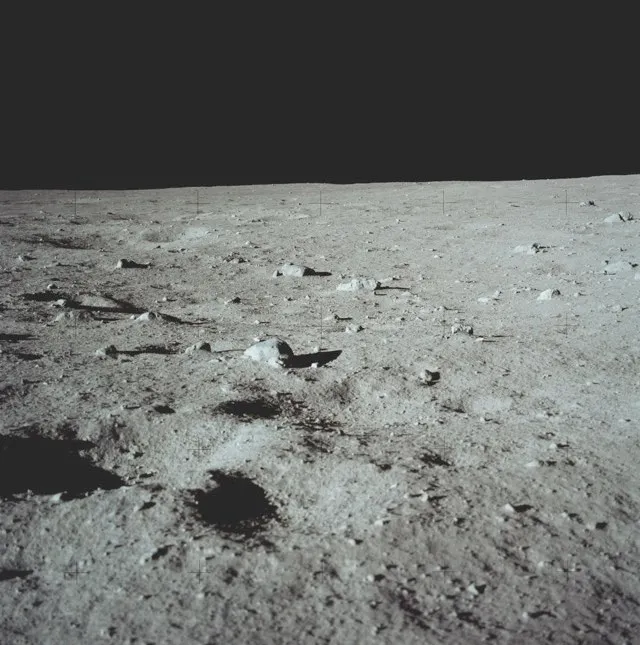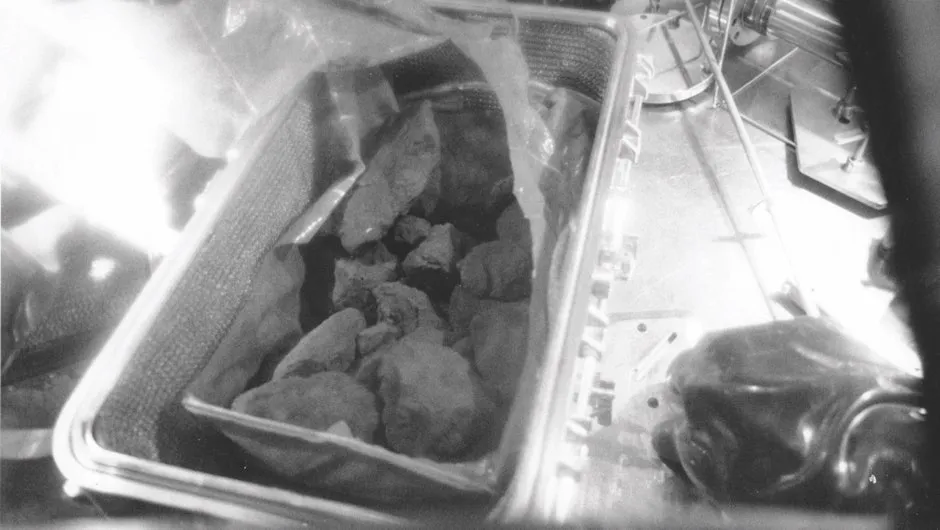In the months before Apollo 11 landed on the Moon, there was intense debate among scientists about how the Moon had formed and what it was made from. Had it gone through a period of partial or complete melting in its history, or had it formed at low temperatures? And what about its surface features: was the proliferation of craters the result of asteroid collisions over aeons?
It was hoped that the samples of lunar rock Buzz Aldrin and Neil Armstrong were tasked with collecting during their time on the Moon would provide the answers to these questions. Upon their return, scientists would at last get their hands on parts of this alien world to analyse for more definitive answers about the nature of the Moon.
Read more about the Apollo programme:
- In pictures: Apollo 11 astronauts' exploits on the Moon
- Is it true that Apollo Moon rock samples went missing?
- Everything you ever wanted to know about the Apollo programme
- Where did the Apollo astronauts land on the Moon? via BBC Sky At Night Magazine
On one side of the debate were the geoscientists, who thought that the Moon was like the Earth, with a dense core – still molten – surrounded by a mantle and a thin crust. On the other hand were those who believed that the Moon was a very different kind of astronomical body, with a surface shaped by forces entirely alien from those that moulded the surface of the Earth.
It was hoped that the samples returned by the Apollo 11 crew would provide evidence that could settle the debate once and for all.
Lakes of lava
On the night before Apollo 11 blasted off to begin its journey to the Moon, American television aired a live debate between geologists on whether lunar craters were volcanic calderas or impact features. Related to this was the debate raging over how old the lunar surface was.
Most geologists believed it to be hundreds of millions of years old, consistent with the age of the Earth’s terrain. Only a minority argued that the surface was primordial, dating to the time of planetary formation. Some lunar researchers even speculated that the meandering lunar rilles – long, narrow channels on the Moon’s surface – might be evidence for ancient rivers.

This was the background into which Apollo 11 delivered 22kg of lunar rocks gathered from the Sea of Tranquility. One of the first findings from the analysis of the samples was that the main rock type in the collection was basalt, a volcanic rock similar to basalts on Earth. Here was certain proof that the dark lunar seas were lava lakes.
But nestled in amongst all the small rock fragments, the scientists also found some light-coloured specimens of anorthosite – a rock type made up mainly of calcium-rich feldspar, which was not predicted to be on the Moon. The colour suggested that these few fragments had come from the lunar highlands, a considerable distance away.
Anorthosite is relatively rare on Earth and the vast volume of this rock spread over most of the surface of the Moon seemed highly peculiar. The situation required a radical idea to explain it and one was provided by Prof John Wood, then a planetary scientist at the Smithsonian Astrophysical Observatory.

His 1970 hypothesis built on earlier theories that the Moon was formed from a collision between the young Earth and a body the size of Mars – an idea that has stood the test of time. Prof Wood suggested that as material came together to form the Moon, so much heat built up that its entire surface became covered in a global magma ocean 100km deep.
In this molten rock, the lighter feldspars rose to the surface to form a crust of anorthosite, which slowly cooled to become the light-coloured lunar highlands. The magma ocean concept was new but is now widely accepted as an early stage in the formation of all the terrestrial planets, including Earth.
Ancient and unchanging
The sample collection also included rocks made of fragments that had been melted together by the heat from asteroid and meteorite impacts. Known as breccias, these testified to the intense bombardment the lunar surface underwent during its history.
All the samples showed that the Moon was dry and lifeless, with no organic compounds. The Apollo 11 samples were also pivotal in dating the lunar surface. Geologists had inferred that more densely cratered sections of the surface were older, but there was no way of knowing how old.
When the lunar basalt samples were found to be 3.6 billion years old, geologists realised that even the younger sections of the lunar surface were far older than the oldest existing surface features on Earth (believed to be the Negev Desert in Israel, which is thought to been in its current state for around 1.8 million years).
Scientists now estimate that 80 per cent of what we know about the Moon came from the Apollo 11 samples. And the findings went further, having a huge impact on ideas about the early history of Earth and the formation of the Solar System.
Follow Science Focus onTwitter,Facebook, Instagramand Flipboard